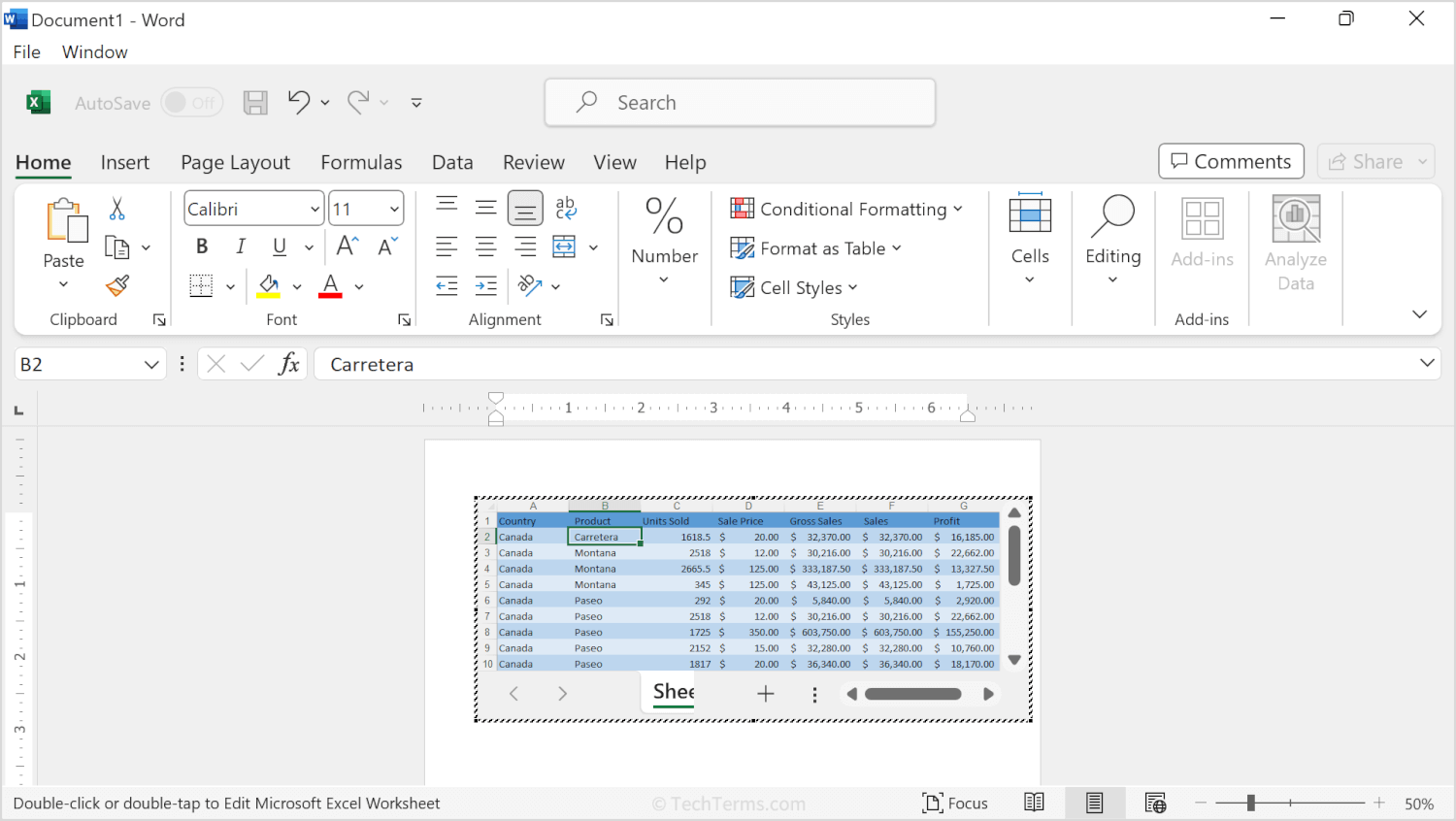OLE
Stands for "Object Linking and Embedding."
OLE is a framework developed by Microsoft that allows you to place an object from one application into a document in another app. Objects placed in documents are not static and can easily be updated later. A document with an object linked or embedded within it is known as a compound document.
A compound document may contain linked objects and embedded objects. Linking an object creates a connection to another file, automatically pulling in its contents. Editing that linked object in another application will automatically update its appearance when viewed in the compound document. For example, if you create a link to an Excel spreadsheet within a PowerPoint presentation and then edit the spreadsheet later, the slide automatically includes the updated spreadsheet the next time you present the slideshow.
Embedding an object instead places it within the compound document entirely. You can edit an embedded object directly within the compound document's application, using the editing tools that the app makes available. If it doesn't have the right tools you need to edit the object, you can always edit the original object's file and embed it again.
Microsoft first developed OLE technology alongside Windows 3.1 to link and embed objects in documents but later expanded the technology into the Component Object Model (COM). While OLE is exclusive to the Windows operating system, the COM framework is not tied to one specific operating system. It allows developers to create software modules that can interact with other applications and formed the basis for ActiveX technology, which allowed web developers to create interactive content for web pages.

 Test Your Knowledge
Test Your Knowledge